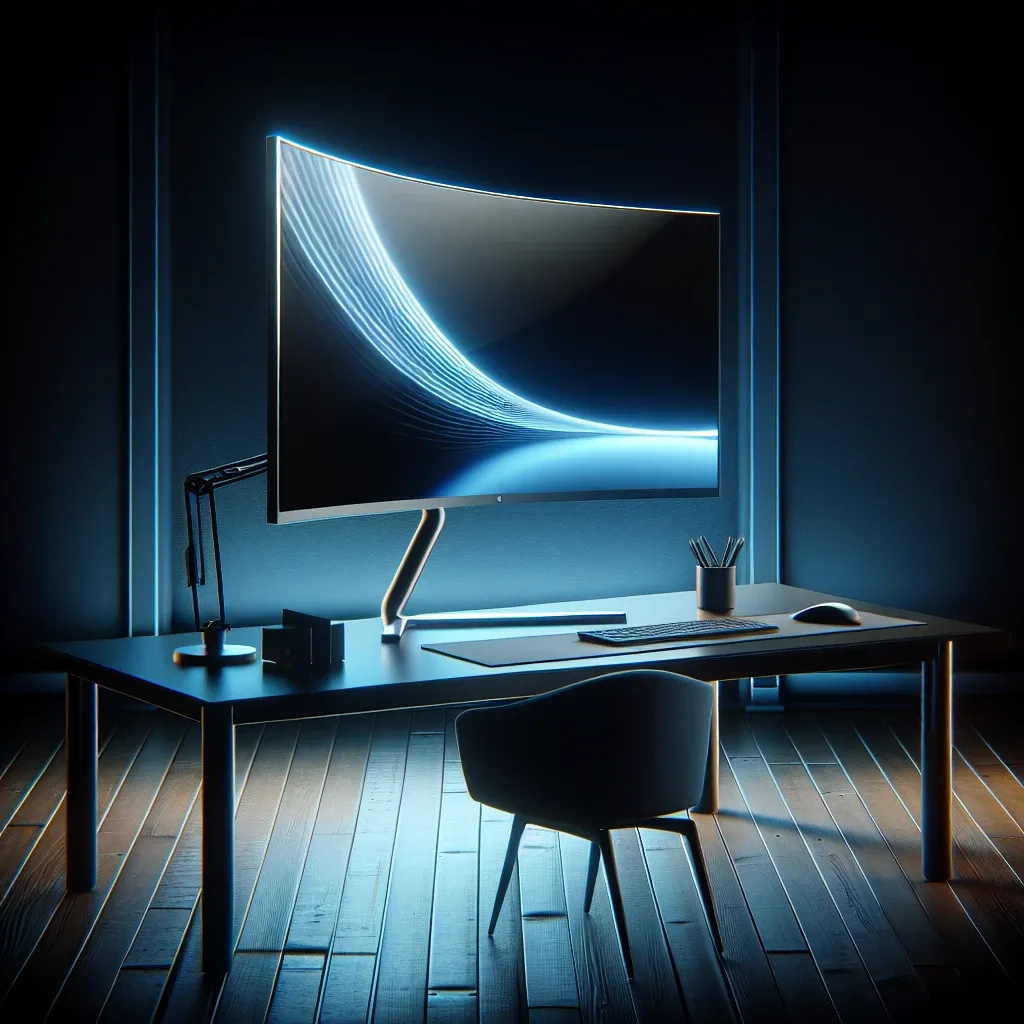The Ultimate Guide to Curved LCD Monitors: Are They Worth It?
Curved LCD monitors have seen a surge in popularity, thanks to their sleek design and unique benefits. They promise an immersive viewing experience, reduced eye strain, and improved performance for both gaming and professional work. But are they the right choice for you? Let’s dive into the world of curved LCD monitors and examine their features, availability, and factors to consider before purchasing one.
What Are Curved LCD Monitors?
Curved LCD monitors feature a gently arched display panel, creating a more natural and immersive viewing angle. Unlike traditional flat screens, these monitors are designed to match the curvature of the human eye, delivering an experience that feels closer to real-world viewing.
They are available in various sizes and resolutions, catering to diverse needs, from casual entertainment to high-end professional setups.
Key Features and Benefits of Curved LCD Monitors
Curved LCD monitors offer several advantages that set them apart from flat screens:
1. Immersive Viewing Experience
The curved design allows the screen to envelop your field of vision, providing a wider and more engaging perspective. This is especially beneficial for gaming and multimedia applications.
2. Reduced Eye Strain
Curved screens minimize distortion and ensure that each part of the screen is equidistant from your eyes. This reduces the strain of tracking across the display, making them ideal for prolonged use.
3. Enhanced Productivity and Gaming
Professionals and gamers often prefer curved monitors for their expanded field of view and better visual coherence. This can result in improved focus, performance, and a more enjoyable experience.
Availability of Curved LCD Monitors
Curved LCD monitors are widely available, with offerings from leading brands like Samsung, LG, ASUS, Acer, and MSI. Here’s a look at some popular models:
| Brand | Model | Size (inches) | Resolution | Price Range |
|---|---|---|---|---|
| Samsung | Odyssey G7 | 32 | 2560×1440 | $600 – $800 |
| LG | UltraGear 34GN850-B | 34 | 3440×1440 | $900 – $1,100 |
| ASUS | TUF Gaming VG32VQ | 32 | 2560×1440 | $400 – $600 |
| Acer | Predator X34 | 34 | 3440×1440 | $1,000 – $1,200 |
| MSI | Optix MAG272CQR | 27 | 2560×1440 | $350 – $500 |
With options available at various price points, there’s something for every user, from budget-conscious buyers to those seeking premium performance.
Factors to Consider When Buying a Curved LCD Monitor
To choose the best curved monitor for your needs, evaluate the following factors:
1. Screen Size and Resolution
A larger screen combined with a higher resolution delivers better clarity and detail. For instance, a 34-inch monitor with a 3440×1440 resolution is perfect for multitasking and immersive gaming, but you’ll need ample desk space to accommodate it.
2. Curvature Radius
The curvature radius, denoted as ‘R,’ measures the degree of the curve. A smaller number indicates a sharper curve. For example:
- 1000R: Highly pronounced curve, ideal for intense immersion.
- 1500R: Moderate curve, balanced for work and play.
- 1800R: Gentle curve, suitable for casual use.
Choose a curvature based on your personal preference and use case.
3. Refresh Rate and Response Time
For gaming and video-intensive tasks, a high refresh rate (120Hz or 144Hz) and a low response time (1ms to 5ms) are critical. These features ensure smooth visuals, minimal lag, and reduced motion blur.
4. Connectivity Options
Ensure your monitor has adequate ports, such as HDMI, DisplayPort, and USB, to connect with your existing devices and peripherals seamlessly.
5. Price and Warranty
Curved monitors are generally pricier than flat screens, but the additional cost often justifies the enhanced experience. Look for models offering a balance between features and price, and choose a brand that provides a solid warranty for peace of mind.
Conclusion
Curved LCD monitors are a fantastic choice for anyone seeking an immersive and ergonomic viewing experience. With a variety of models available, they cater to gamers, professionals, and casual users alike. Before buying, consider key factors like size, resolution, curvature, refresh rate, and connectivity to ensure the monitor meets your specific needs.
Whether you’re upgrading your gaming setup, enhancing your productivity, or simply looking for a more engaging viewing experience, a curved LCD monitor can be a worthwhile investment.
SEO Titles and Meta Descriptions
Option 1
Title: Curved LCD Monitors: Benefits, Features, and Buying Guide
Meta Description: Discover the advantages of curved LCD monitors, including immersive viewing and reduced eye strain. Explore top models and buying tips to find your perfect fit.
Option 2
Title: The Ultimate Guide to Curved LCD Monitors: Everything You Need to Know
Meta Description: Looking for a curved LCD monitor? Learn about their benefits, features, and top models to make the best choice for gaming, work, or entertainment.
Option 3
Title: Curved LCD Monitors: Are They Worth the Investment?
Meta Description: Explore the pros and cons of curved LCD monitors, with insights on key features, top brands, and tips to help you choose the perfect model.



